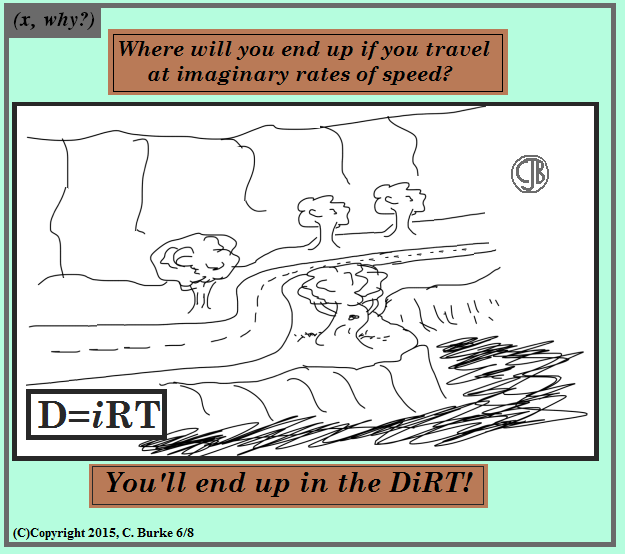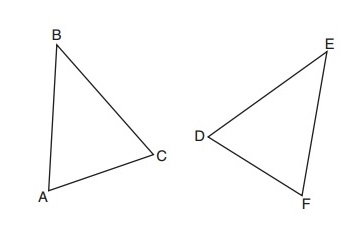If AC = 8.5 feet, BF = 25 feet, and m∠EFD = 47°, determine and state, to the nearest cubic foot, the volume of the water tower. The water tower was constructed to hold a maximum of 400,000 pounds of water. If water weighs 62.4 pounds per cubic foot, can the water tower be filled to 85% of its volume and not exceed the weight limit? Justify your answer. |
If you are a regular reader of this blog, you may have seen the discussion generated by this problem between me and a fellow educator when I previously posted the questions in another thread with questions and answers from the exam.
Most of it stemmed from the fact that I made an error in calculating the problem, but I had no way of knowing how significant the error was or what rubric the state would use to grade the mistake. Discussion followed speculating what they would and should do, based on what has happened in the past (recent past, not your parents' past) and what they said they wanted to do now.
Cutting to the chase for those who don't want to read that entire thread, I made a rounding error, and my Volume was off by 1 as a result. Looking at it now, it was likely a one-point deduction. However, before we get there, let's review the problem.
Breaking it into parts
Part of the reason that this question was overwhelming was the irregular nature of the shape. (Another part was that the question was divided into three sections spread across two pages, including the two illustrations above.) This has been done before on exams, but rarely with three sections, and never (to my knowledge) with 3-D objects. It's usually an area or perimeter question.The water tower consists of a hemisphere (half a sphere), a cylinder and a cone. The radius of the all three parts is the same, and it is given. The height of the hemisphere is its radius. The height of the cylinder is given. The height of the cone needs to be calculated using trigonometric ratios. We have one angle and the adjacent leg of the right triangle, and we want to know the height, which is opposite, so we need to use tangent.
tan(47) = x/8.5, so x = 8.5(tan(47) = 9.11513403521
And here is the problem. Rounding.
One of the biggest problems on Regents exams is rounding. If the answer isn't rounded correctly, to the correct number of places (as specified in the problem), the student will lose 1 point -- which is a hefty price to pay for a two-point problem.
This, however, is only part of the problem, and not a final answer. No number of decimal places for height is specified because it's still the middle of the problem. In the past, a test might have asked for the height (if only to guide the students toward the answer) and then used that height to find the Volume, but this test did not do that, so rounding is NOT appropriate at this point.
I have warned my students in recent years about the dangers of using 3.14 for pi in problems, particularly when large numbers are involved. Current-day exams assume (demand, actually) that the student is using a scientific or graphing calculator and therefore has access to a function key with the value of Pi to 8 or more decimals, and this should be used. This is fine, considering that you can use the pi symbol in your calculations. In the case of this question, you need to carry all those decimals around with you.
All of them? No, not really. But how many? That's the tricky part. The more the better.
The state releases sample answers (not from actual students' exams). For this question, the sample correct answer had rounded to FIVE decimal places. A second response only used FOUR places, but also used 3.14. It lost a point and was faulted for the latter mistake, but not the former one.
So the Volume of the entire water tower needed to be calculated as
which yields 7650.373... etc., which rounds to 7650.
Some careful experimenting yields the following results: Using both 9.1151 and 9.115 give answers that still round to 7650.37 and still give the correct answer. However, using only 9.12 gives a Volume of 7650.74, which is rounded "correctly" gives an incorrect answer of 7651. Had it been truncated instead of rounded, the correct final result would have been obtained but whether or not the two errors (which cancelled out) were caught by the scorer is questionable. (They are grading a lot of papers.) Likewise, if 9.11 (an incorrect amount) were used, the final answer would've been 7549.98, which rounds to the correct answer. Again, would it have been caught and marked incorrect? I couldn't tell you.
Finishing the Problem
Whatever answer you obtained (even one far off from the ones mentioned above), that answer has to be carried forward into the last part of the problem.
7650(62.4) = 477,360.
.85(477,360)= 405,756 pounds, which is more than 400,000 pounds, so
No, the water tower cannot be filled to 85% of its Volume.
If you didn't completely answer this part of the question, you would have lost a point or, possibly, two. You cannot state "No" without the calculations and justification. There is never credit for a 50-50 guess.
Conclusion
Rounding in the middle of a problem is hazardous to your grade, as is not rounding correctly at the end of the problem.
Generally speaking, no, you don't need eight decimal places for simple problems. However, when problems get more complex and require more significant digits, each decimal places grows in importance. When in doubt keep the extra digits.























































